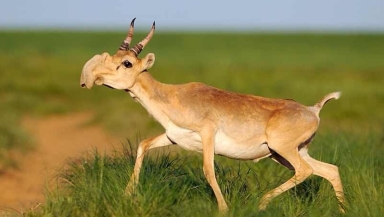
Could this be a sign of the coming Apocalypse?
Some 60,000 critically endangered antelopes called saigas have died in Kazakhstan in a span of four days, and the cause of the mass dying remains a mystery to scientists.
When the puzzling event happened in late May this year, veterinarians in the area initially were not alarmed by the antelopes' deaths, thinking they were nothing out of the ordinary.
"Since there happened to be die-offs of limited extent during the last years, at first we were not really alarmed," geoecologist Steffen Zuther recalled.
After four days, however, 60,000 saigas were found dead, accounting for more than half of the endangered antelopes' population in Kazakhstan.
"The extent of this die-off, and the speed it had, by spreading throughout the whole calving herd and killing all the animals, this has not been observed for any other species. It's really unheard of," Zuther said.
Adding to the mystery, scientists could still not pinpoint the cause of the die-off, months after it happened.
Field researchers have already retrieved samples from the environment where the saigas lived, including rocks and soil where the animals walked on, as well as water and vegetation they consumed.
The scientists also conducted detailed analysis of the dead animals' bodies.
So far, the researchers believe bacteria may have caused the massive deaths of the saigas.
Tissue samples retrieved from the dead animals showed toxins, produced by Pasteurella and possibly Clostridia bacteria, which are believed to have caused extensive bleeding in most of the saigas' organs before they died.
However, scientists could still not say for certain why these normally harmless microbes, found to be similar to those commonly found in gardens, can trigger the die-off.
"There is nothing so special about it. The question is why it developed so rapidly and spread to all the animals," Zuther said.
The deaths of the saigas are expected to have an impact on the natural ecosystem in Kazakhstan, where these antelopes break down organic matter, recycle nutrients and prevent wildfires caused by too much leaf litter on the ground.

















